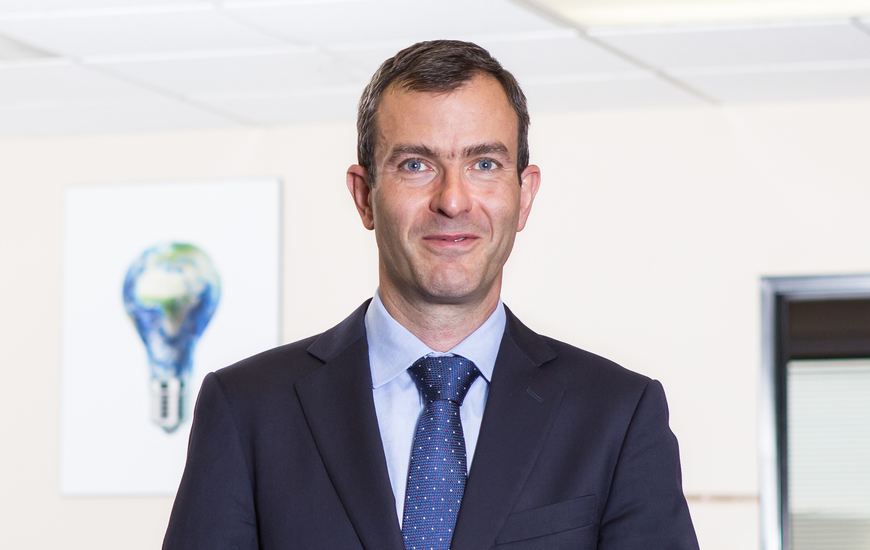CompositesPortal and PortaleCompositi inaugurated a new section dedicated to “The future of Composites” to know, from the voice of the most important experts in the world, in which direction this sector is moving and what we have to expect from the future. We started with Carmelo Lo Faro, president of Solvay Composite Materials .
Mr. Lo Faro, what do you think about the future of the composite sector? Many analysts are predicting a steady 5% growth by 2021.
“Well, I don’t like to talk too much about specific percentages because percentages are always depending on variable situations and on what part of the market you are in. But one point must be clear. Composites is a very young industry and in a young industry there is a lot of potential that is still underutilized both from a technological side and from industrialization perspective. I believe today the industry doesn’t fully yet understand the real potential of composites. The general public or even some engineers think composites is about weight reduction. I think that reducing weight is very important, but composites bring many other benefits, beyond lightweighting, that are not fully understood yet but that will be big drivers for future growth”.
For example?
“For example, things like the ability to make any shape you want. Composites are used on large wings, but weight is a secondary advantage. The main reason is that you cannot make that wing with metal because you cannot form aluminum to the complex airfoil profiles that you need today. Other examples are in the oil and gas area, where today corrosion an issue, in addition to other problems such as weight. There is another aspect: market gowth. The Aerospace industry continues to increase its adoption of composites. Defence/military continues to be an interesting market, as well as oil and gas, and last but not least, we have to consider the automotive sector, where we face the biggest challenge in the adoption of composites for a few reasons. There is a big ecosystem that needs to be created in automotive, an ecosystem made of knowledge, infrastructure, technologies and other important categories. The automotive industry is a large potential opportunity but is also the one with the biggest challenge in terms of work and time needed to enable the full adoption of composites”.
Many people think that carbon fiber will change the future of the automotive helping to lighten the weight of the electrical car. Do you agree with this idea?
“I think that if people continue to see the benefit of composites only as a way to reduce weight, these technologies will only be adopted by a small part of industry, and this also applies to electric cars. But it’s true that we are living a big transformation in the automotive industry. As we know, there will be more change in the next ten years than in the last one hundred years of the industry. I see two trends: autonomous vehicles and the electric and hydrogen power cars. And these trends will create the opportunity to adopt new technologies”.
Light, resistant but also very expensive. Carbon fiber is not an easy way to produce parts for the automotive sector in which, as everybody knows, metals are the most used materials. Do you think that we could change this situation in the global industry?
“The key word is not just about the material cost but about the total cost of making parts. There are many unexploited benefits that composites bring and today people need to stop thinking that composites are just an exotic and expensive material. We have to look at composites in the right way. The mission of Solvay is to develop technologies enable the production of parts at a competitive cost. Yes, the raw material maybe more expensive but ultimately there is a possibility to make parts cheaper. How? One keyword is integration. One of the advantages of composites is absolutely the ability to integrate more, which reduces costs significantly. We are continuing to innovate. To grow further, composites must deliver more value. Future challenges and opportunities are in manufacturing (press forming, thermoplastics and additive manufacturing), joining and simulation. The future will be driven by industrial scale and economies, convergence of aero and auto practices, increased importance of production system versus end-product”.
What do you think about the fusion and acquisition processes that, in the composite sector, takes the big raw material companies becoming bigger and bigger? The risk that in the future only a little group of companies will operate in the global market is real, isn’t it?
“There is not a simple answer to this question. My view is that consolidation, and competition are both good drivers for composites adoption. Industry consolidation creates scale that helps customers use materials in bigger application. Competition helps by fostering innovation and the development of technologies that, together with scale, will help growth”.
-

-
17 October 2018























